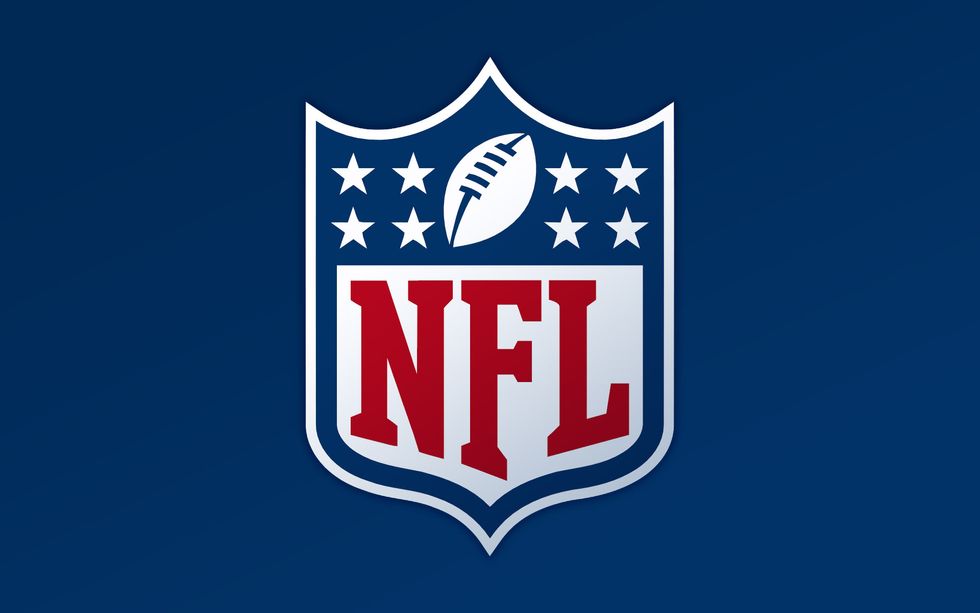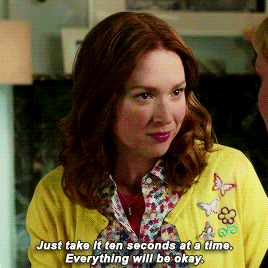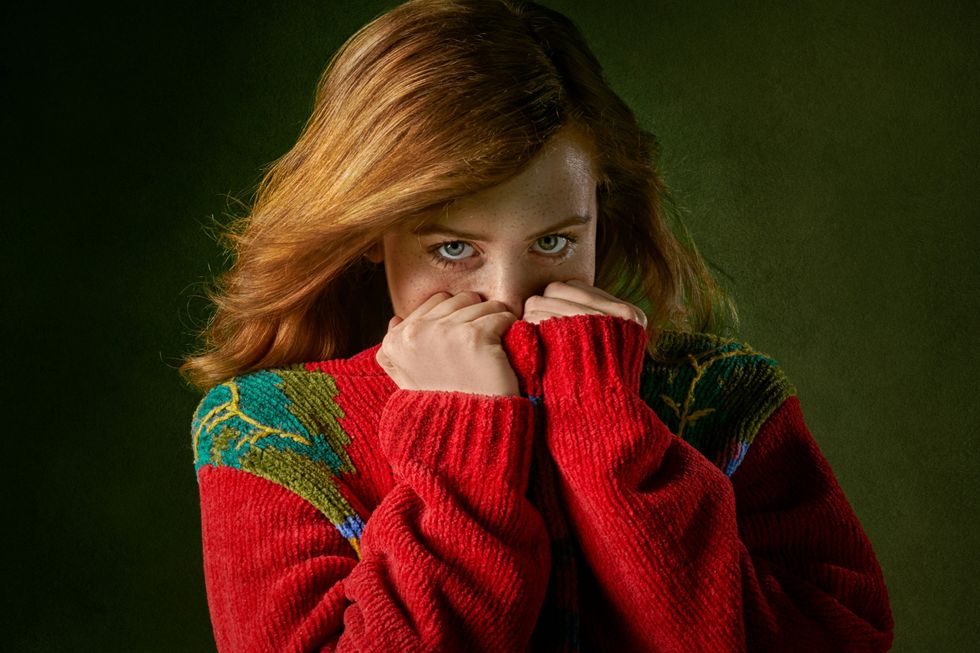Unfortunately not every woman is knowledgable about football. Most of the "cool" girls learned the game during lazy sundays with their dads or past boyfriends, so if you don't know the game, its okay! Whether you want to learn the game for yourself or to impress your man, this guide is for you!
The Teams
The National Football League (NFL) consists of 32 teams. The teams are divided into two conferences: the National Football Conference (NFC) and the American Football Conference (AFC). Within each conference there are four divisions: East, West, North and South. The four division winners and two wild-card teams compete in a single-elimination tournament leading to the Super Bowl, which is played between the champions of the NFC and AFC.
Don't be the girl that picks her team based on her boyfriend. If you're already rooting for the same team then great, but if not, it's always fun to have a little rivalry. Sports make for exciting weekly bets, so get creative ladies!
NFC
NFC East
Dallas Cowboys, Philadelphia Eagles, New York Giants and the Washington Redskins (Left to Right).
NFC West
San Francisco 49ers, Arizona Cardinals, St. Louis Rams and the Seattle Seahawks (Left to Right).
NFC North
Minnesota Vikings, Green Bay Packers, Chicago Bears and the Detroit Lions (Left to Right).
NFC South
New Orleans Saints, Tampa Bay Buccaneers, Atlanta Falcons and the Carolina Panthers (Left to Right).
AFC
AFC East
New England Patriots, Buffalo Bills, Miami Dolphins and the New York Jets (Left to Right).
AFC West
San Diego Chargers, Oakland Raiders, Denver Broncos and the Kansas City Chiefs (Left to Right).
AFC North
Cincinnati Bengals, Baltimore Ravens, Pittsburg Steelers and the Cleveland Browns (Left to Right).
AFC South
Indianapolis Colts, Houston Texans, Jacksonville Jaguars and the Tennessee Titans (Left to Right).
The Field
There are 11 players from each team on the field at a time. The offensive team has possession of the ball and they try to get the ball down the field into the other team's end zone. The defensive players try to stop the offensive players from making a touchdown... (If this is news to you then you really need to start paying attention if you're going to learn this game!)
TERMS
End Zone: Area where touchdowns are scored.
Goal Line: When the ball crosses the opponents goal line while the player has possession, a touchdown is scored.
Goal-post: Two vertical posts with a crossbar at the back of each end zone for field goals and extra points.
Sideline: Boundary lines
Pylon: A small orange marker at each corner of the end zone. They are used as a visual aid to mark the inside of the end zone. If a player is in possession of the ball and touches the pylon, it is considered a touchdown.
End Line: The line at each end of the field within either end zone.
Yard Line: A marker on the field that marks the distance to the closet goal line measured in yards.
The Positions
Blue (Offense)
RB: The Running Backs receive passes, run the ball and block.
Q: The Quarterback throws passes to receivers and hands the ball to running backs. Captain of the offense.
WR: The Wide Receivers are the main targets for receiving passes.
TE: The Tight Ends block defenders and are also eligible to catch passes.
The offensive line consists of the center, two guards and two tackles. They are ineligible to catch passes unless the ball is tipped and also cannot run the ball unless another player fumbles.
C: The Center delivers the snap to the quarterback.
G: The Guards block to protect the quarterback and create holes.
T: Tackles block to protect the quarterback and create holes.
Red (Defense)
LB: The Linebackers are the primary tacklers on running plays. They also can blitz the quarterback or defend against pass attempts.
CB: The Cornerbacks cover receivers and assist on running plays.
S: The Safeties are the final line of defense. They cover receivers and stop running plays.
The defensive line consists of the defensive tackles and the defensive ends.
DT: The Defensive Tackles try to move forward progress in the middle of the field.
DE: The Defensive Ends defend the outside edges against runs and are the primary players who rush the quarterback.
Special Teams
Special Teams are used for specific kinds of plays, for example, kickoffs and kickoff returns, field goal attempts and blocks, and punts and punt returns.
The Game
A game starts with the kickoff at the defense's 30-yard line. A kick returner from the offensive team will try and catch the ball and run it forward. Where the ball stops is where the offensive team starts their drive or series of plays towards the end zone. When the kickoff is caught in the offense's own end zone, the kick returner either runs the ball out of the end zone or they kneel in the end zone to signal a touchback. In this scenario the ball is played from the 20-yard line.
- Games are split into four 15-minute quarters with a 12-minute break at halftime. At the end of the first and third quarters the teams change sides of the field.
Each time the offensive team gets possession, they have four downs, or tries, to gain 10 yards. If they move the ball 10 yards or more they receive a first down, which means they start over and have another set of four downs to move the ball further down the field. If they fail to get a first down then they lose possession of the ball. The defense works to stop the offense from getting a first down and scoring. If the offense reaches a fourth down they typically choose to punt the ball away, which forces the other team to begin their drive further down the field.
Scoring
Touchdown= 6 points
A touchdown is scored when the ball is carried across the goal line into the end zone.
Extra Point and Two- Point Conversion= 1 or 2 points
Following a touchdown, the ball is placed at the two-yard line where the offense will kick for an extra point. The offense can also try and score another touchdown and gain two points.
Field Goal= 3 points
When the offense cannot score a touchdown, they generally try for a field goal. Field goals are typically kicked from inside the defense's 45-yard line.
Safety= 2 points
A safetyoccurs when the offensive player with the ball is tackler behind his own goal line.
Referee Signals
There is really no need to memorize these, but being familiar with them will help you know what is going on!
Additional Terms
Blitz: A defensive strategy in which additional players rush the quarterback. The object is to tackle the quarterback behind the line of scrimmage or put pressure on the quarterback, making him hurry his pass.
Down: One of the four opportunities the offense has to score or advance 10 yards.
False start: Penalty for illegal movement before the snap.
Fumble: A live ball that is dropped. The ball can be recovered by either team.
Holding: Penalty for holding a player to stop progress.
Incomplete pass: A forward pass that is not caught.
Interception: A pass that caught by the defense.
Line of Scrimmage: The yard line where a down begins.
Onside kick: When the kicking teams tries to field its own kickoff after the ball travels 10 yards.
Pass interference: Penalty for illegal contact during a play.
Sack: To tackle the quarterback behind the line of scrimmage resulting in a loss of yards.
Touchback: When a ball is recovered in the team's own end zone during kickoffs, turnovers or punts and the team then starts the first down at the 20-yard line.
Yeah it's a lot! But keep in mind even loyal fans don't always understand calls, so ask questions in between plays when you need to!















 man running in forestPhoto by
man running in forestPhoto by 





 "I thought you knew what you signed up for."
"I thought you knew what you signed up for." man and woman in bathtub
Photo by
man and woman in bathtub
Photo by  four women sitting on black steel bench during daytime
Photo by
four women sitting on black steel bench during daytime
Photo by  Uber app ready to ride on a smartphone.
Photo by
Uber app ready to ride on a smartphone.
Photo by  woman in red tank top and blue denim shorts standing beside woman in black tank top
Photo by
woman in red tank top and blue denim shorts standing beside woman in black tank top
Photo by  blue marker on white printer paper
Photo by
blue marker on white printer paper
Photo by  welcome signage on focus photography
Photo by
welcome signage on focus photography
Photo by  woman in white and black striped long sleeve shirt lying on bed
Photo by
woman in white and black striped long sleeve shirt lying on bed
Photo by  pink pig coin bank on brown wooden table
Photo by
pink pig coin bank on brown wooden table
Photo by  person holding iPhone 6 turned on
Photo by
person holding iPhone 6 turned on
Photo by  person holding pencil near laptop computer
Photo by
person holding pencil near laptop computer
Photo by  person slicing vegetable
Photo by
person slicing vegetable
Photo by 
 woman covering mouth with sweater
Photo by
woman covering mouth with sweater
Photo by  person holding remote pointing at TV
Photo by
person holding remote pointing at TV
Photo by  a woman with her arms raised in a crowd of people
Photo by
a woman with her arms raised in a crowd of people
Photo by  "Shocked disbelief: '95% of the population is undateable?'"
"Shocked disbelief: '95% of the population is undateable?'"








